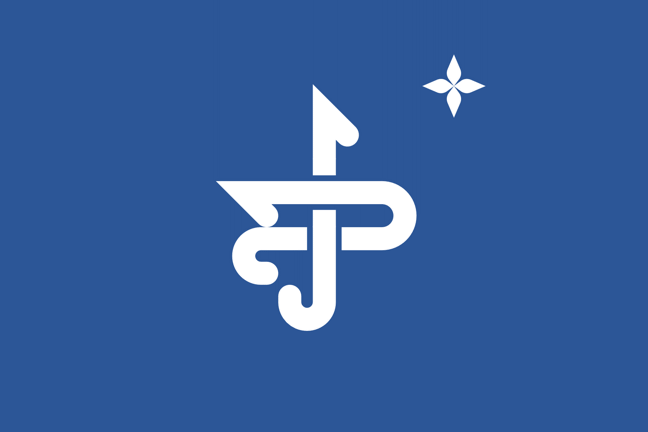 image by
Mæhæmad, 24 February 2025
image by
Mæhæmad, 24 February 2025
Last modified: 2025-03-26 by rob raeside
Keywords: daghestan |
Links: FOTW homepage |
search |
disclaimer and copyright |
write us |
mirrors
In Dagestan live about 35 different ethnic groups.
Some of these peoples have their own flags.
António Martins, Nov 1998
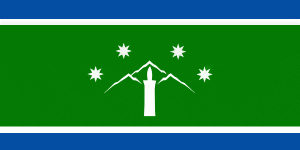 image located by Jason Saber, 01 February 2015
image located by Jason Saber, 01 February 2015Wikipedia now includes a flag for the Aghuls, a nation located in Dagestan.
See this link http://en.wikipedia.org/wiki/Aghul_people.
Jason Saber, 01 February 2015
Image source is
http://www.vexillographia.ru/russia/minority.htm, See -
http://en.wikipedia.org/wiki/File:Aghul_flag.svg
Victor Lomantsov, 02 February 2015
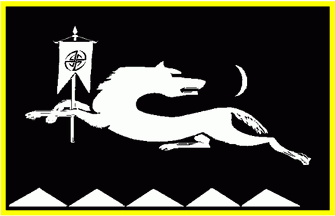 from Wikipedia, 10 September 2008
from Wikipedia, 10 September 2008Yet another nation of Dagestan (and Azerbaijan), this time the largest one - the Avars. Their complicated history, both medieval and modern, is presented at: http://en.wikipedia.org/wiki/Caucasian_Avars They total slightly over million people (together with absorbed, related nationalities like Andis, Akhvakhs, Botligs, Godoberis, Bagulals, Karatas, Tindis, Chamalals (all considered Avars), the Dido group, which includes Didos, Khwarshia, Bezhetas, Khunzals and Ginugs and, not so closely related, but belonging to the proto-Avar tribes - the Archis). About 815,000 Avars live in Russia (750,000 in Dagestan, the rest in Chechnia, Kalmykia, Moscow and elsewhere) About 160,000 live in Azerbaijan, 45,000 in Turkey and 2,500 in Georgia. Smaller communities can be found in Jordan, Germany and the U.S. They are overwhelmingly Sunni Moslems. Majority adhere to the Shafi rite. Their language belongs to Nakh-Dagestan branch of the Caucasian languages. Khunzakh dialect serves as lingua franca and is a foundation for the Avar literary language written in modified cyrillic script since 1938 (from 1927 to 1938 it was written in latin script, and before that in arabic) The town of Khunzakh is a cultural center of Avaristan and serves as an unofficial capital of the Avars. Although the Avaristan (the Avar homeland) has no official status, the nationalistic feelings of the Avars are strong and on the rise.
Recently, the modern version of the old Avarian Khaganate flag, white
wolf of the Huns on black, is gaining an acceptance as the national
flag of the Avars and of Avaristan. Original old flag is on display
at the Central Museum in Makhachkala. The modern flag shows the white
wolf holding a banner with swastika and looking backward toward the
crescent moon. It is framed in yellow. The Avar swastika is a common
symbol there since ancient times. Called "sswerdiro" in Avar
language, it means: "Power to Destroy - Power to Create: Power of God".
Chrystian Kretowicz, 21 May 2008
Our Latvian colleague, Ilmars Bite, just posted on RussoVex the best
yet image of the alleged flag of the Avars. This image differs from
the one which I ( and Avar Khunz) reported earlier, by the inclusion
of the representation of the stylized mountain range at the bottom of
the flag, as seen on the photo of the flag maintained by the museum in
Makhachkala.
Chrystian Kretowicz, 10 September 2008
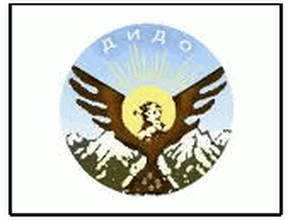 image by Chrystian Kretowicz, 21 August 2011
image by Chrystian Kretowicz, 21 August 2011
Let me share with you the flag of a small ethnic group in Dagestan -
Dido (Tsezy).
More info on them at:
http://www.facebook.com/photo.php?fbid=1731544948231&set=a.1717351273398.69807.1826737355&type=1&theater
Chrystian Kretowicz, 21 August 2011
 image by
Mæhæmad, 24 February 2025
image by
Mæhæmad, 24 February 2025
Recently I've been leading the flag design efforts for the Kaitag people. I had very fruitful assistance from the incredible folk at NAVA and had the honor to present the design at one of their design forums. Our community is working on manufacturing it.
The flag of the Kaitag people is a blue cloth with a white seal in the center.
The stylized Kufic monogram from the pantheon of Utsmiys - the rulers of Kaitag
- symbolizes centuries-old statehood. Its four parts represent the Kaitag
judicial districts: Kara-Kaitag, Irchamul, Shurkant and Kattagan.
A little
higher and to the right is a white four-leaf madder flower, a reminder of the
hope and fortitude of the people who, being at the epicenter of historical
events, defended themselves and found the strength to move forward.
Deep blue
is the traditional background of Kaitag embroidery, combining the pursuit of
knowledge of the future and the preservation of the heritage of the past.
The
proportions of the flag are 2:3. The background color is PMS 7685 C (#2C5697).
Mæhæmad, 24 February 2025
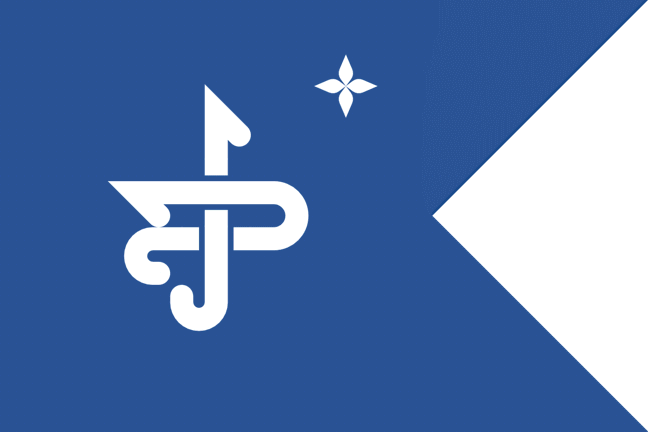 image by
Mæhæmad, 24 February 2025
image by
Mæhæmad, 24 February 2025
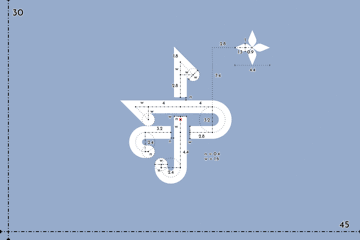 image by
Mæhæmad, 24 February 2025
image by
Mæhæmad, 24 February 2025
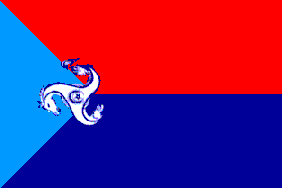 image by António Martins, 08 January 2003, from
cpekacar.sitemynet.com/anadagkum.htm
image by António Martins, 08 January 2003, from
cpekacar.sitemynet.com/anadagkum.htm
I’ve just seen on the French-German cultural TV channel Arte a
documentary about Dagestan, in which the flag of nationalist movement of
Kumukh people was shown (interview of its leader, with a big flag on the
wall and a table flag in front of him). The emblem on the flag is white
outlined black; the three “beasts” are linked together (as in the emblem
of Isle of Man), and the circle in the center is
is the border of zone where the three beasts join in one. In the center of
the circle, crescent and star, white outlined black.
Olivier Touzeau, 16 March 2000
On cpekacar.sitemynet.com/anadagkum.htm,
there are pics of Kumukh Arms, which are actually the flag with somewhat
different colors from this one.
Michael K. Renalds, 01 July 2002
I believe that several patterns exist; the basic design is what all people
agree.
Jaume Ollé, 22 November 2002
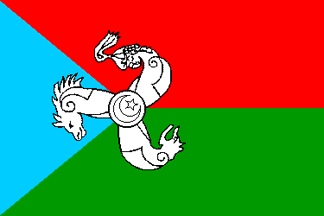 image by Jaume Ollé, 28 October 1996,
and António Martins, 11 November 2002
image by Jaume Ollé, 28 October 1996,
and António Martins, 11 November 2002
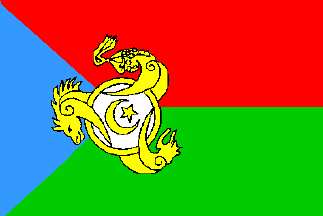 image by Jaume Ollé, 28 October 1996
image by Jaume Ollé, 28 October 1996
This image is from Gaceta de Banderas
[gdb],
information of Michel Lupant.
Jaume Ollé, 22 November 2002
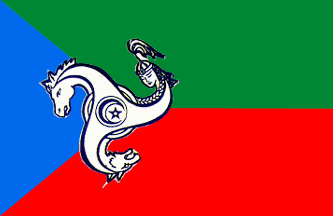 image by Victor Lomantsov, 23 September 2006
image by Victor Lomantsov, 23 September 2006
I remade the image according photo of real flag received from
Khadzhy Bayram Bolat (Turkey).
Order of stripes is different.
The flag is used by Kumyk people in Dagestan and Kumyk diaspora in Turkey.
Victor Lomantsov, 23 August 2006
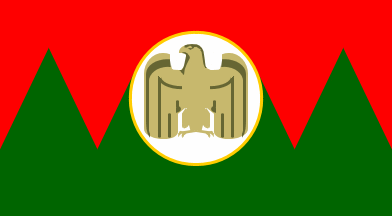 image by Chrystian Kretowicz, 5 March 2008
image by Chrystian Kretowicz, 5 March 2008Lakku Bilayat - Zeml'ya Laktsev - Land of the Laks
Yet another nation within multi-ethnic Dagestan.
They are native to the region. Live in the mountains
of central Dagestan in Lakskiy and Kulinskiy Rayons.
Some were moved to the lowlands in 1944 to replace the deported
Dagestani Chechens.
Their language belongs to the Nakh-Dagestan group of the
North Caucasian linguistic family.
They number ca.157,000 (140,000 in Dagestan).
Sunni Muslims
Capital in the village of Kumukh.
Chrystian Kretowicz, 5 March 2008
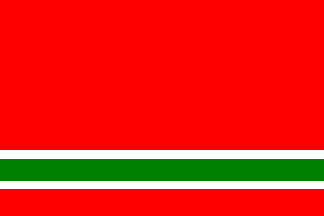 image by
Ruslan Baymashev, 12 July 2015
image by
Ruslan Baymashev, 12 July 2015Lezgi (Lezgian, Lezghi, Lezgin, Kiurinsty) [LEZ] 257,000 in Russia
(1996); 171,400 in Azerbaijan (1996); 3,650 in Georgia; 2,570 in
Kazakhstan; 1,599 in Kyrghyzstan; 10,400 in Turkmenistan; 1,708 in
Ukraine; 1,585 in Uzbekistan; 1,200 in Turkey (1996); 451,000 in all
countries. Southern Dagestan ASSR, the western Caspian Sea coast,
central Caucasus. North Caucasian, Northeast, Lezgian. Dialects: Kiuri,
Akhty, Kuba, Gjunej,
Garkin, Anyx, Stal. Has literary status based on the Kiuri dialect.
Cyrillic alphabet. Some dialects are reported to not be inherently
intelligible with other. Mountain slope. Agriculturalists. Sunni and
some Shi’a Muslim.
Jarig Bakker, 07 October 1999, quoting from the
Ethnologue database
Lezghistan (or Lezgia) is the southernmost tip
of Russia, included in the multi-ethnic republic of
Daghestan. Its does include
also some neighbouring territory of
Azerbaijan
António Martins, 10 August 1999
This is flag use Lezgi people and Lezgic (Tabasaran, Aghul, Rutul, Archi and
other Lezgic group). This is flag name is "Lezgi flag" ore "Caucasian Albanian
flag"
Ruslan Baymashev, 12 July 2015
Previously Reported Flag
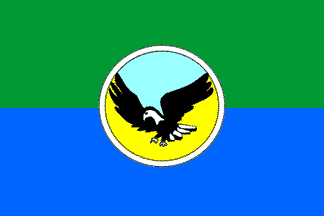 image by Jaume Ollé, 26 April 1999
image by Jaume Ollé, 26 April 1999
Accordin Aliev Saumur this flag want to be:
It is not Lezghian flag! I am from Dagestan. Please remove this flag. Not
seeing misleading people and do not insult people Lezghian.
Ruslan Baymashev, 02 June 2015
This one needs some more digging - from a very brief look at the internet,
the symbolism of the flag is clearly used by the Lezgi.
Rob Raeside, 02 June 2015
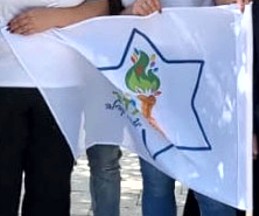 image located by William
Garrison, 18 November 2023
image located by William
Garrison, 18 November 2023
Possible flag of the "Mountain Jews of Dagestan (Russia); c. Nov. 2, 2023. On Oct. 29, 2023, a mob in Russia's mostly Muslim region of Dagestan stormed the airport in Makhachkala in search of Jewish passengers arriving from Israel. They also searched local hotels to hunt for Jews and Israelis, and also attacked the local synagogue.
Source:
https://www.jpost.com/diaspora/
William Garrison, 18 November
2023
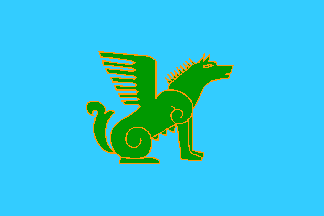 image by Jaume Ollé, 28 October 1996
image by Jaume Ollé, 28 October 1996
The beast portrayed, flying lion with dog’s
head, sure fits the description of
Chelyabinsk/Bashkir simargl
— and though Daghestan (where the Nogai dwell) is
some 1500 km SW of Chelyabinsk
region, there may be a connection, as both
Nogay and Bashkir (the
second largest ethnical group in Chelyabinsk region,
after the Russians) are
(western) turkic
(slim connection, shared with eight other
peoples of the Russian
Federation, but who knows…).
António Martins, 26 December 2002
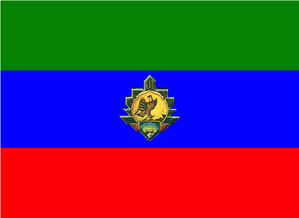 image by Chrystian Kretowicz, 16 February 2009
image by Chrystian Kretowicz, 16 February 2009One of many Dagestani nationalities, Tabasaran number over 13,000 and live in the mountains in southeast Dagestan. They are second largest (after Lezgins) group of Lezgi-Samur linguistic community. Their neighbors are: Dargwas(north), Lezgins(south), Aguls(west) and Azerbaijanis(east).
The flag and emblem were adopted in 2006.
Chrystian Kretowicz, 28 February 2008
The flag of Tabasaran is a Dagestani flag with the Tabasaran
emblem in the middle
Chrystian Kretowicz, 16 February 2009
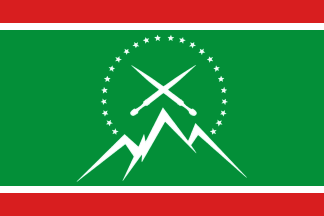 image by Olivier Touzeau,
17 April 2023 and Tomislav Todorovic, 15 May 2023
image by Olivier Touzeau,
17 April 2023 and Tomislav Todorovic, 15 May 2023
based on image located by Jason
Saber, 17 April 2023
This photo was posted on Facebook,
described as the Tabasaran flag.
Jason
Saber, 17 April 2023
According to this page: https://zoritabasarana.ru/rubriki/gazeta/item/15170-vyberem-natsionalnyj-flag-tabasarana this flag was one of the 5 proposals submitted to the choice of Tabasaran people in 2020.
"Over the past 5-6 years, voting on the choice of the
national flag of Tabasaran took place in several stages at different venues. In
particular, in the social network VKontakte in the groups "Tabasarans |
Tabasaran Today", "ARHAVAL", "Tabasarans | Juvandar", "Tabasaran" and others; in
the social network Instagram in the groups tabasaran_obshina, tabasaran_vilayat
and others; on the social network Facebook in the groups âTabasaranarâ,
âTabasaranâ, âTabasaran - yiz Vatanâ, etc. Voting on the social network Facebook
was also covered on the pages of the newspaper âTabasarandin nurarâ (September,
November 2017, January 2020). As a result, users of each social network chose
their own flags, and today we do not have a single common Tabasaran flag. In
order to positively resolve the issue once and for all, to make a correct and
fair decision, today all these groups TOGETHER put forward the flag they have
chosen for the final (FINAL) vote. So, on May 1, with the support of the
Tabasaran Foundation and the Tabasarandin Nurar newspaper, the final vote on the
choice of the Tabasaran flag will start at 20:00 on the social networks
VKontakte, Instagram and Facebook. Voting will end on May 30 at 20:00. Voting
will take place on the pages of the TABASARAN FOUNDATION".
I have not found the
result of this competition.
The green-blue-red flag shown above has the
emblem of Tabaranskiy rayon (https://mr-tabasaran.ru)
on the colours of the Daghestan flag. I have some doubts about its actual
existence, and it is probaby not the ethnic flag of Tabasaran people.
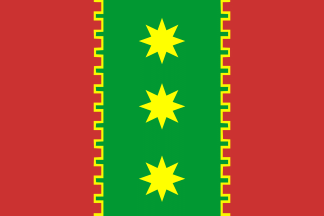 image by Olivier Touzeau,
17 April 2023
image by Olivier Touzeau,
17 April 2023
One
of the most often seen "candidates" on the internet is this red-green-red flag.
According to
https://md-gazeta.ru/news/82084:
"Before the
end of 2020, Tabasarans, representatives of one of the nationalities of
Dagestan, will choose their national flag. The main sketch has already been
selected, but its discussion has been extended until the end of this year.
The competition for the sketch of the flag was announced in social networks
in September 2017. Out of more than two dozen sketches, two were selected by
voting, and at the second stage - the main one. The flag is a rectangular
panel, executed in three colors - red, green and golden (yellow). Two red
fortress walls are separated by a green stripe with three golden stars placed
vertically under each other at an equal distance. The red fortress walls
symbolize the strength of the spirit of the heroic defenders of Tabasaran,
the blood shed in the fight against the conquerors. The teeth of the fortress
walls on the flag - 12 on each side - symbolize 24 societies of medieval
Tabasaran, and the fortress wall itself - their unity. Green is the color of
Islam. Three golden stars on a green background - three historical parts of
the once unified Tabasaran before its collapse at the end of the 16th century
as a result of an internecine war. The yellow (golden) color of the stars
on the flag and the outline of the fortress walls are a symbol of fertility
(abundance, prosperity) of the Tabasaran land."
The authors of the sketch are
the moderators of the Tabasaran People's Website and the Tabasaranar Facebook
group Gulmagomed Rasulov and Mazan Rashidov. But for final recognition, this
option must go through a nationwide discussion. âThe final results of the
competition will be summed up at the end of this year,â Gyulahmed Mallaliev,
editor-in-chief of Zori Tabasaran, told to Molodezhka Gazeta.
The flag
sent by Jason could be seen in 2020 on the facebook group: Информационный блог" (see
https://www.facebook.com/tabasaranar)
Olivier Touzeau, 17 April 2023